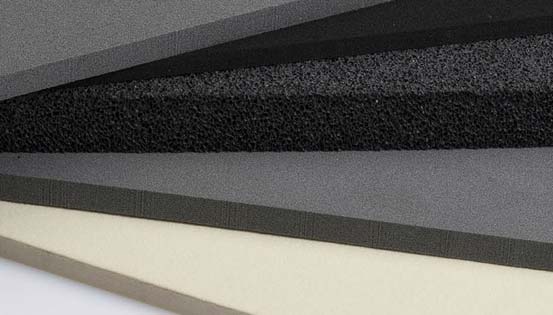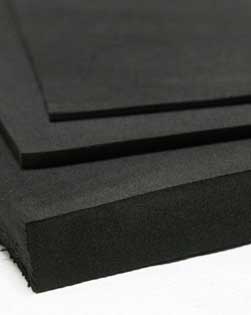September 29 2010- Nitrile rubber (NBR) is a common rubber material used in our day-to-day lives someway or the other. This rubber is used to make the rubber medical gloves, fuel, shoes, hoses, floor mats and many other such widely used objects. With trade names like Europrene, Krynac, Nipol, the nitrile rubber is more chemically resistant than natural rubber and used widely in the oil industry. Being a resilient material, it resistant to a wide range of temperatures and hence demanded in areas where ordinary rubbers would not work.
Nitrile Rubber
Composition of Nitrile Rubber
Nitrile rubbers are made up of copolymers of two materials: Butiadiene: Butiadene is made from acetylene or ethyl alcohol. Acrylonitrile: Acrylonitrile is made from acetylene or ethylene oxide and hydrogen cyanide. In a stainless steel container, they are combined using either hot or cold polymerization.

Manufacturing of Nitrile Rubber
Once there is complete mixture of monomers, it forms the nitrile copolymer. This latex material is allowed to pass through a number of filters. The filters help in the removal of unwanted solids from the mixture. This material is then mixed with an antioxidant material. This is done to stabilize the mixture. To solidify the material, coagulating agents are added. This is washed and then dried. This process produce crumb rubber, which is the basic form of nitrile rubber. Crumb rubber is further liquefied. It is this liquid nitrile rubber which is used to manufacture a wide range of products.
Benefits of Nitrile Rubber
Nitrile rubber is used in many applications where natural rubber cannot be used. People with latex allergies often use nitrile rubber gloves. This material is used in those areas where acid, petroleum exposure, temperature, or other natural hazards would obstruct the use of natural rubber. NBR is highly resistant to mineral oils, vegetable oils, petroleum oils, aromatic hydrocarbons, and many acids. This rubber also has good elongation properties, adequate resilience, compression and tensile set.
- Anti Vibration Mountings
- Automobile Rubber Products
- Calendered Rubber Products
- Extruded Rubber Products
- Medical Rubber Products
- Metal Bonded Components
- Rubber Adhesives & Sealants
- Rubber Ball
- Rubber Bands
- Rubber Beading
- Rubber Bearing
- Rubber Belt
- Rubber Buckets
- Rubber Bullets
- Rubber Cable
- Rubber Coating
- Rubber Duct
- Rubber Expansion Joints
- Rubber Flooring/Matting
- Rubber Footwear
- Rubber Gloves
- Rubber Injection Parts
- Rubber Lining
- Rubber Magnets
- Rubber Molded Products
- Rubber Pads
- Rubber Rollers
- Rubber Stopper
- Rubber Suit
- Rubber Track
- Rubber Valve
- Rubber Balloon
- Rubber Stamps
- Rubber Fenders
- Acrylic Rubber (ACM)
- Butadiene Rubber (BR)
- Butyl Rubber (IIR)
- Chlorosulfonated Polyethylene(CSM)/ Hypalon
- Ethylene Propylene Diene Monomer
- Fluoroelastomers (FKM)/Viton
- Isoprene Rubber (IR)
- Nitrile Rubber (NBR)
- Perfluoroelastomer (FFKM)
- Polychloroprene (CR)/Neoprene
- Polysulfide Rubber (PSR)
- Silicone Rubber (SiR)
- Styrene Butadiene Rubber
How to Make a Custom Rubber Stamp?
Whenever designing a custom stamp for your company, never compromise on its quality because in the end it is the most...
Read MoreLatex and Silicone Rubber Tubing - A Comparison!
Many industries use rubber tubing for various purposes. In fact, various types of rubber tubing are used for different applications...
Read MoreSilicone vs Acrylic Adhesive- A Comparison
Silicon and acrylic adhesives are those rubber adhesives that are widely used in Polyimide tapes. In fact, the polyimide...
Read More

